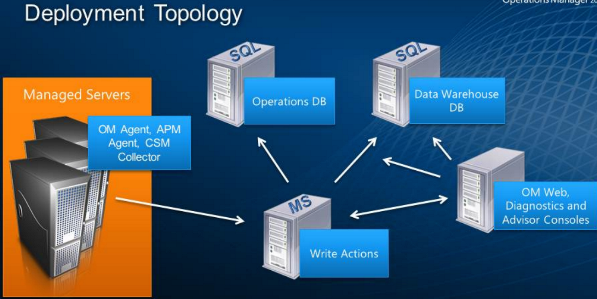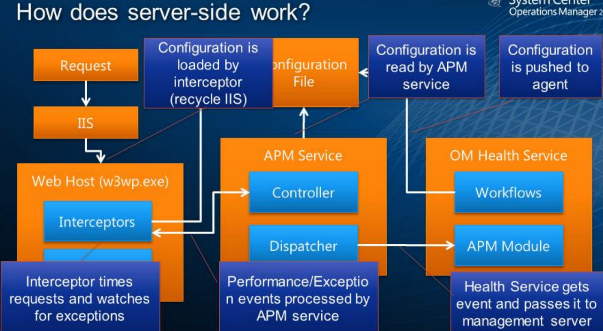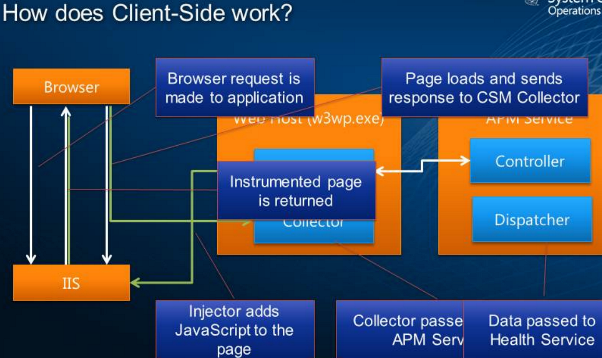Today was the fifth SCOM 2012 CEP meeting, talking about Application Performance Management with Michael Guthrie presenting.
I will split this post into two parts as well.
This is part 1 B) and you can find part two over here.
Framework for .net monitoring.
This is a screen from the slides on the subject:

This is different from an MP based module.
Goal is to bridge the gap between Operations and Development. Give more information that the application team can take action on. There will be no noticable impact on the throughput of the application itself. There is a max 5% CPU tax on the managed server. There is support for ASP.NET and WCF hosted on IIS 7.
Advantage will be that there is no need to adjust the code for the .Net application. The code is attached by APM to the IIS.
This is essentially AviCode, but integrated in the new product.
Avicode 5.7 templates will continue to work after upgrading to SCOM 2012. It does not upgrade the bits.
Deployment topology.

All the consoles are installed at once. So also diagnostics and advisor console.
When doing a push install of the agent the bits will be deployed as well, but the agent will be disabled until you run your first application monitoring for that server (same as the ACS agent).
The Avicode database has been merged into the operations manager database. What used to be in the Avicode Advisor is now in the datawarehouse.
Server- and Client-side monitoring.
The server side is doing the monitoring from the system itself. The client side monitoring is monitoring the performance from a browser client side perspective. This is the last mile. This will see browser side errors which can not be seen from the server side. It also checks for performance counters such as how long it took to download and render a picture. Together this gives an end-to-end visibility on application performance and reliability.
This is the flow of the server side monitoring.

From OM side the configuration gets pushed to a configuration file. This gets loaded by the APM Service. APM service turns itself on and loads the interceptors in IIS (this needs a recycle of IIS). The interceptor times requests and watches for exceptions. Processing of the data coming from IIS is offloaded into the APM service. The APM service passes things on to the Health Service.
Client-side

Injector adds javascript to a page as a wrapper. The browser request gets processed and comes back to the collector which does processing. At least this is what I understood from the story (because somebody was ringing at the door I missed a piece, sorry).
This was about half time through the session. Read more on the second half in part 2 of this post. You can find it here.
Bob Cornelissen
